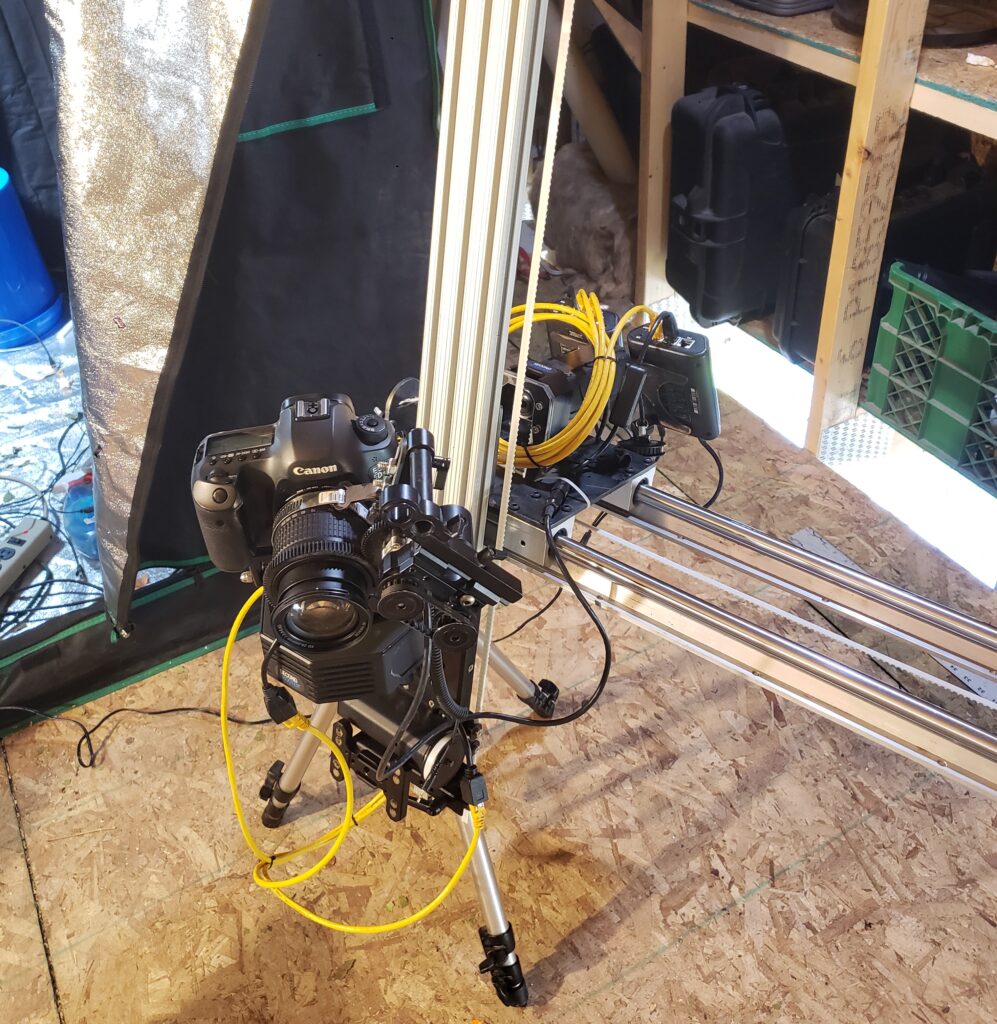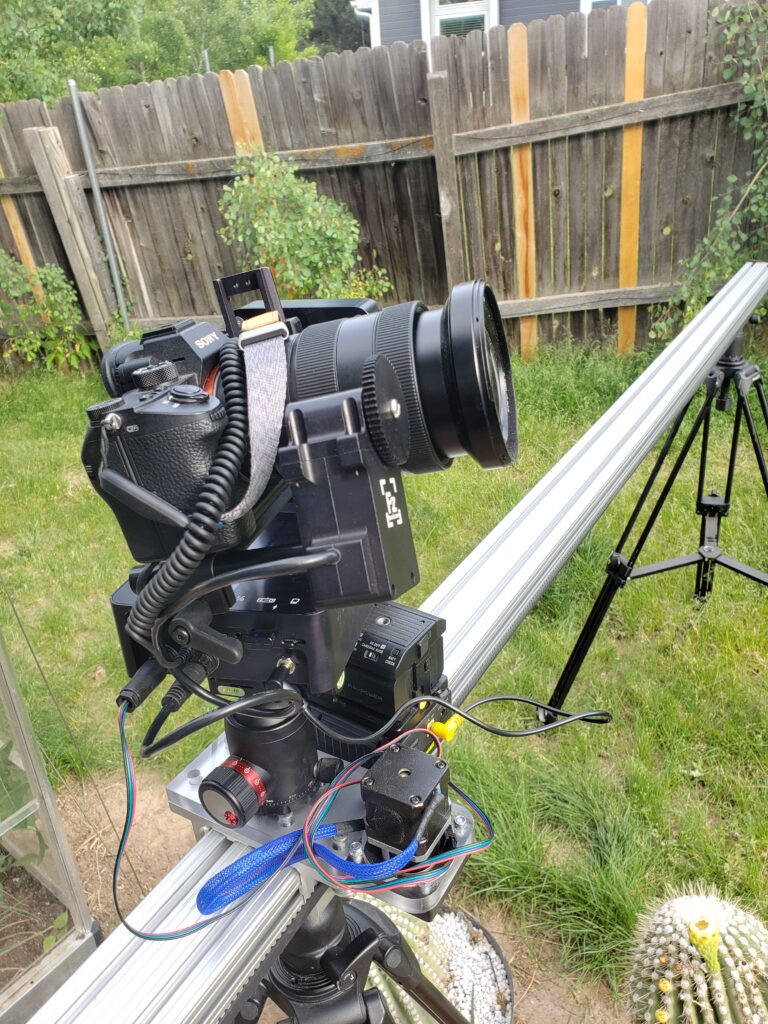“After 40 years of filming timelapse these rigs have opened a whole new world for us” – Tim Shepard, Director of Timelapse Photography, The Green Planet”
https://www.facebook.com/watch/?v=344638897480805
Click above to watch a BBC one video on the robots I built for the Green Planet Series.
Robots
In order to accomplish the ground breaking filming techniques I have pioneered which will soon be displayed on BBC’s Green Planet, I had to build a team of robotic cameramen. Each one is unique with its own capabilities, but they all provide the ability to film with complete camera freedom. No longer bound to a simple Pan/Tilt/Slide/Focus arrangement, these robotic systems are capable of putting the camera anywhere within a shooting space for complete camera movement. X/Y/Z movement is complemented with Pan/Tilt/Focus on every system at minimum, with Aux channels to provide 3D stereoscopic imaging, Macro Slider, Camera Roll, prop and light movers and more.
One Camera acts as 10
Utilizing indexing capabilities, each and every robot is capable of shooting multiple angles simultaneously. Botanical timelapse takes a long time, rather than have a camera on a slide making a single move taking one image every 20 minutes, it is far more efficient to be able to program the robots to interlace multiple movements to film multiple angles/subjects simultaneously. These robots are only limited by the time between intervals as to how many programmed moves they can shoot.
Fully adaptable filming
A first in botanical timelapse is the newly pioneered method of shooting and interacting with the plants. Other systems are “set and forget” which means if a plant grows outside the area of focus the shoot is lost and must be redone. I have pioneered a fully adaptable filming technique that allows me to re-program, adjust, and correct on the fly, eliminating the problems of the past and allowing the camera to interact and chase the plant in was never done before.
track and follow complex subjects.
Rock Solid performance
On average these robotic camera platforms perform for months on end. Administrative efforts behind the scenes manage updates, reboots. Special considerations ensure full logic connectivity with no communication drops, as well as full remote control access.
Macro work
While working on green planet I have developed new ways to film macro subjects, one such method is focus stacking to expand the area of focus to greatly improve the final results. I have successfully filmed with stacks over 20 deep, at 16x macro for some fantastic results soon to be seen on BBC’s Green Planet.
Gantries
Two robots with an overhead gantry orientation allow for a camera to decent into a set from above and shoot in any orientation within the shooting envelope
Pan/Tilt/Focus/Lift/X/Y/Roll/3D-Stereoscopic
Towers
Two unique robots in a tower formation take the same shooting envelope of the gantries and turn it on the side, allowing for capture of taller plants over 2 meters in height. Despite the large monolithic appearance, each of these has an extraordinary level of accuracy for indexing and have been proven workhorses for years. The unusual design was built from the ground up with plants in mind. It can take the camera from ground level to over 2 meters in the air, and has a shooting width of 1 meter, while the entire system slides forwards and backwards several meters.
Pan/Tilt/Focus/Lift/Slide/Track

Macro position platforms.
Two more robots specialized for extreme macro work take motion to the set by moving the set itself in x/y/rotate directions for the first part, with a pan/tilt/focus system on a riser for lift capability. Shooting precise repeatable moves at 1-16x magnification is achievable.

Kessler Crane Second Shooter
Not all these systems were engineered by myself, I also employ two SecondShooter systems from Kessler Crane. The first is a Six axis setup including Pan/Tilt/Focus/Lift/Slide and Rotate for a small stage. The second is a complete 5 Axis setup for Pan/Tilt/Focus/Zoom/Slide. These systems are smaller than my other systems and competent both in the studio and in the field.

eMotimo Spectrum
And rounding up the team is a Spectrum ST4 from eMotimo, highly capable and able to work with more advanced motion control software, This system often finds itself employed for months at a time in the studio for special projects.
